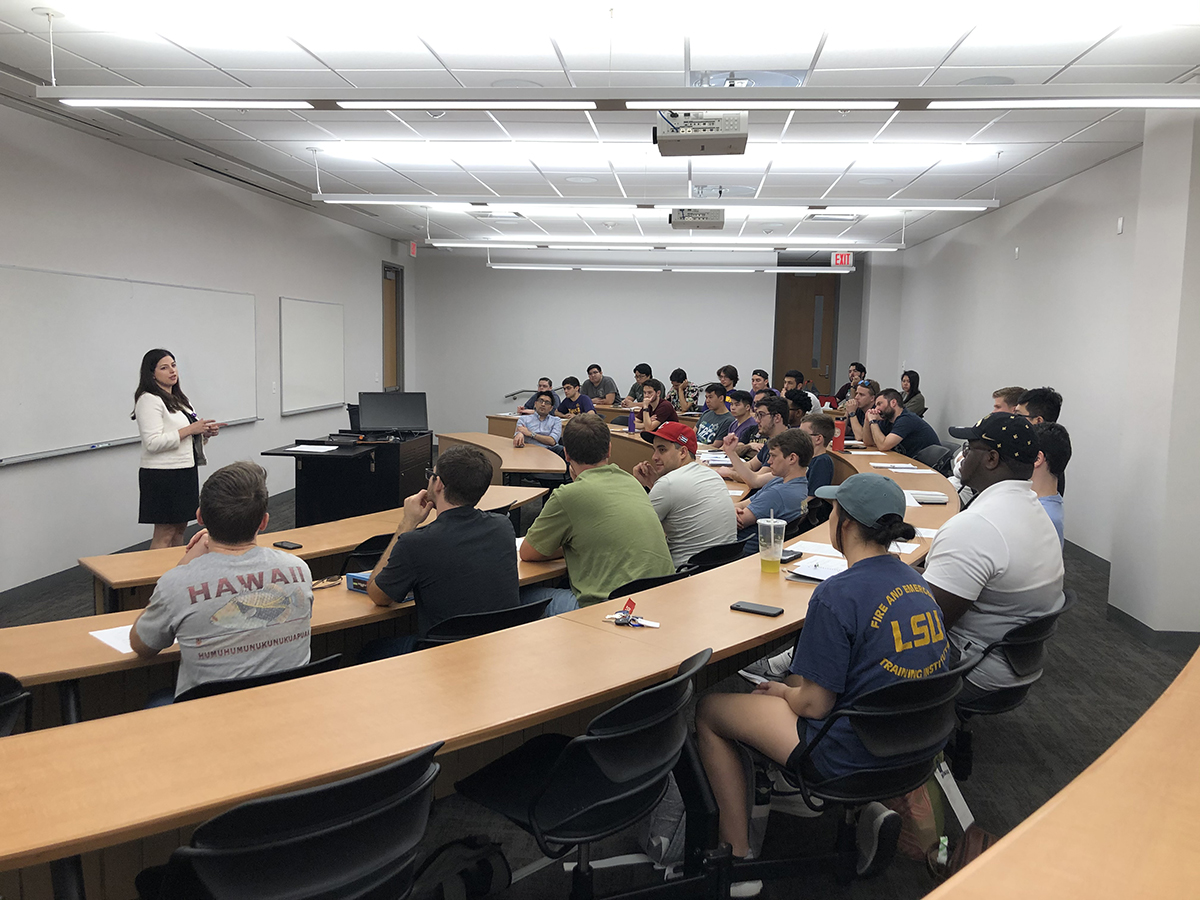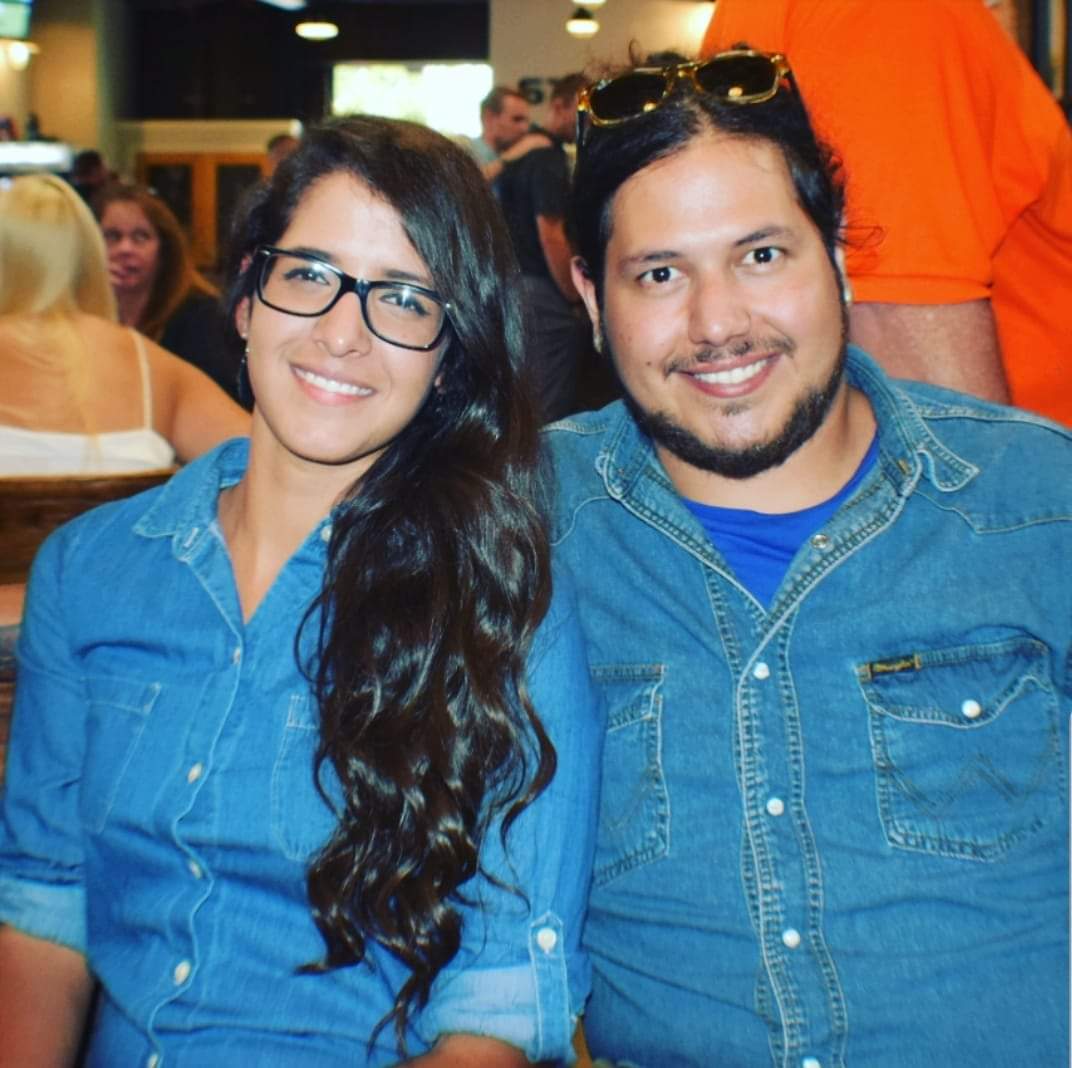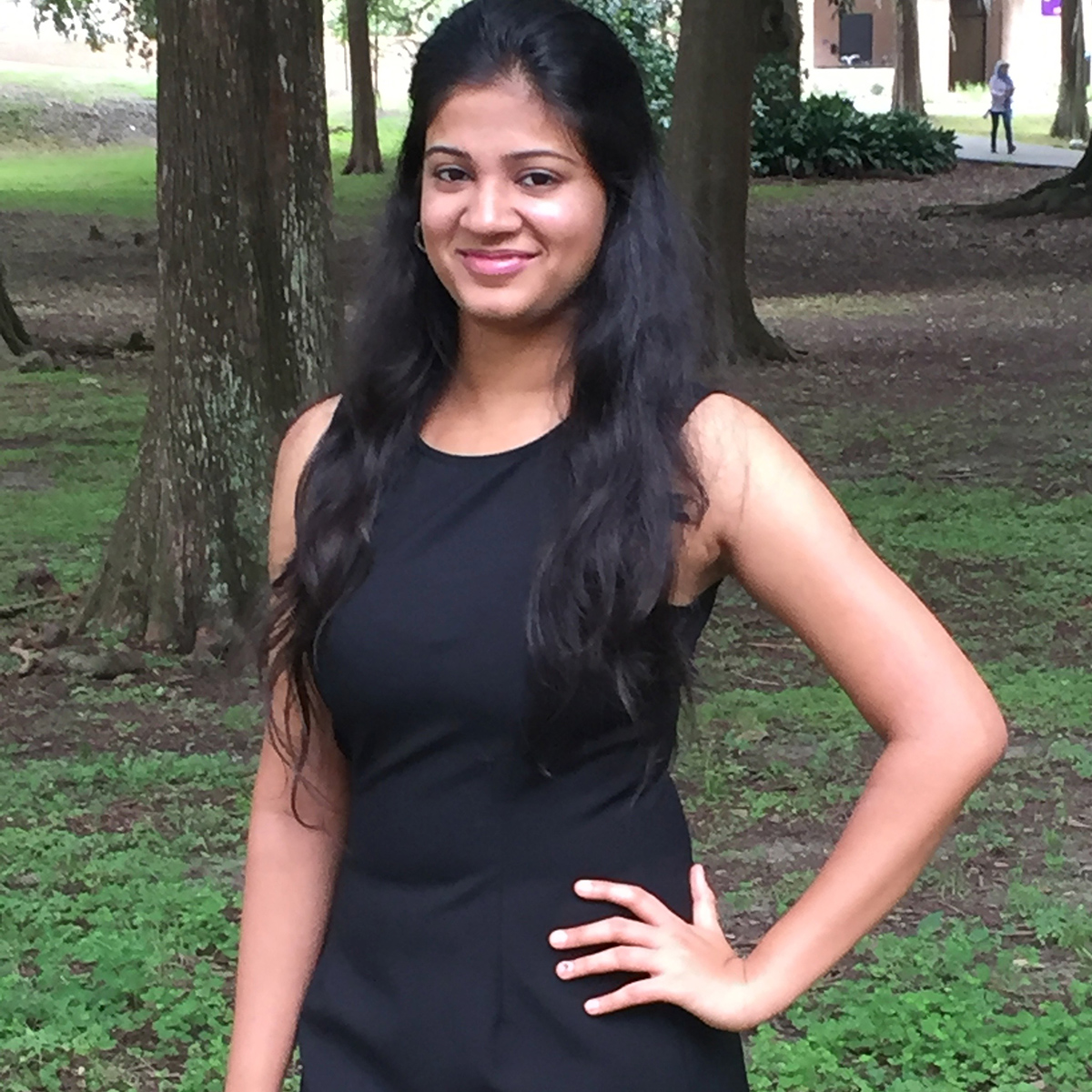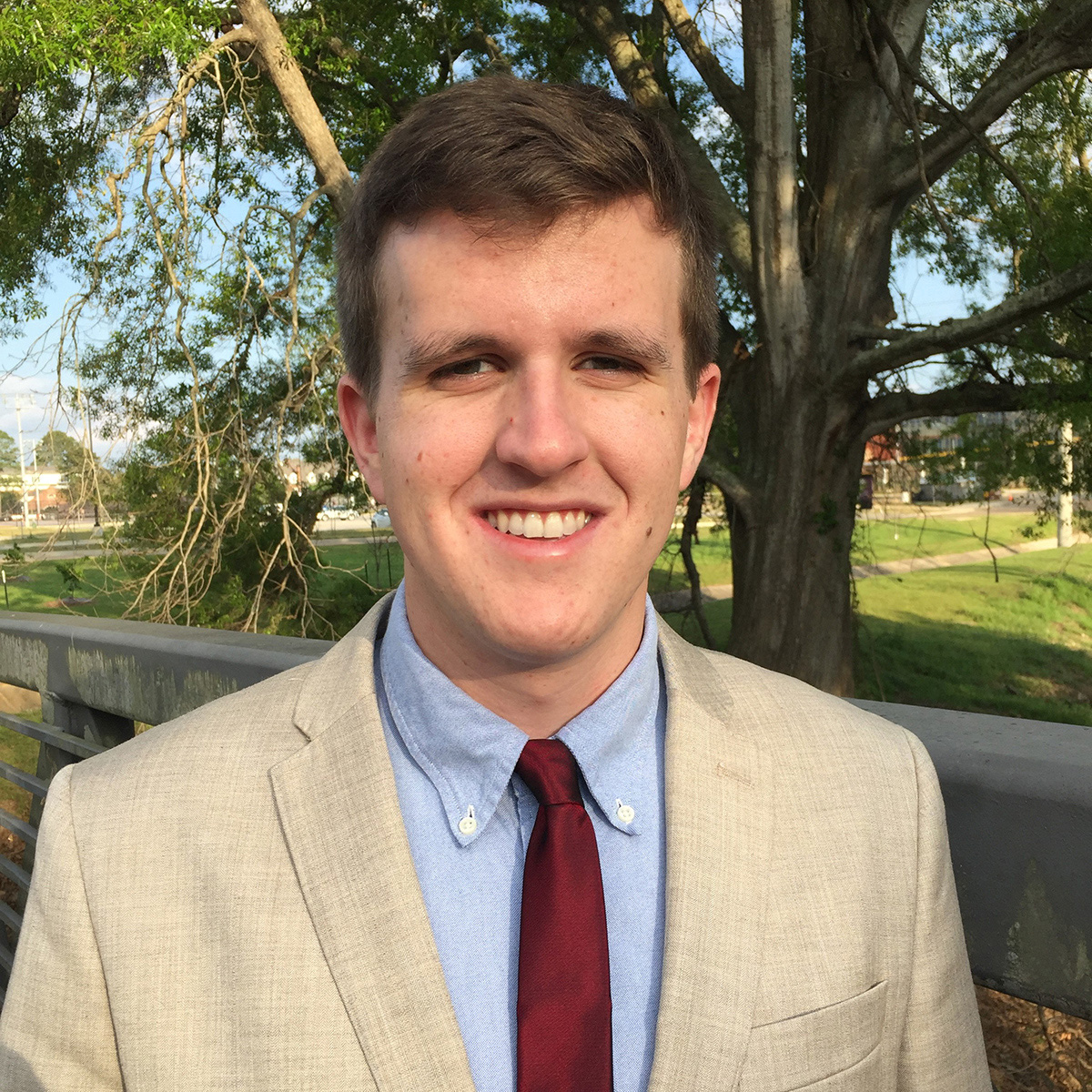Power Professors (Again) Partner with Entergy, Bringing Industry Expertise and Real-World Experience into the LSU Classroom
April 05, 2021
A standout university-industry collaboration is helping to train the next generation of power engineers.

Michelle Bourg, vice president of asset management at Entergy and electrical engineer (LSU ’02), talked with students at LSU about the benefits of working on real-world projects and industry software in the academic setting. (Photo taken before COVID-19.)
While universities generally prepare students to get jobs or continue on with academic
research upon graduation, few take it as far as to officially partner with outside
companies to co-teach classes for consecutive semesters to make sure their graduates
stand comfortably on the bleeding edge of their future professions.
Since 2019, LSU professors have collaborated with Entergy on shaping the university
curriculum, including hands-on labs, to make sure electrical engineering graduates
are competitive and leave the university ready to work in utilities and the increasingly
complex power engineering field, where they’ll need to know how to bridge electricity
from conventional as well as renewable sources, such as solar and wind.
“We wanted to bring in real-life examples and make sure the students see the value in what they’re learning—how it will play out on the job in the near future.”
Michelle Bourg, vice president of asset management at Entergy
“We need engineers who understand how to perform analysis of the power transmission system, and this collaboration was an excellent opportunity for us to partner with LSU to help develop those skills,” said Michelle Bourg, vice president of asset management at Entergy and electrical engineer (LSU ’02). “This benefits the students and it also benefits both Entergy and other companies in the electric power industry. We wanted to bring in real-life examples and make sure the students see the value in what they’re learning—how it will play out on the job in the near future. That’s why it was important for us to help develop this class from the start.”
Software Tools and Methods for Power System Analysis, as the class is called, is taught in the LSU College of Engineering each spring, with cross-registration open to students from Southern University. It was important to Entergy to partner with a program recognized for academic excellence while investing in the larger local community, said Bourg:
“It contributes to our success to deliver value to the communities in our service footprint where we live and work so we can support overall development and growth right here in Louisiana. We prefer to recruit locally because of the residual, longer-term benefits that come with that. Delivering a qualified workforce also ties in with Entergy’s mission—it all comes around full circle.”
The software used by the students at LSU, called PowerWorld, is used on a daily basis by Entergy and utility companies all across America.
Bourg and other professionals at Entergy worked closely with LSU assistant professors
and engineers Mehdi Farasat and Amin Kargarian on the development of the class. The
software used by the students at LSU, called PowerWorld, is used on a daily basis
by Entergy and utility companies all across America. It allows engineers to monitor
the security of a power system, decide when to take transmission lines in or out of
service and when to do maintenance, and control flow and provide sufficient service
while mitigating risk. Entergy and LSU co-developed the eight real-world lab scenarios
the students work on in the class.
“In my mind, I want to help create more Michelles and a pipeline from LSU to industry,”
Bourg said. “Working with the same tools is definitely part of that.”

LSU electrical engineering senior Christine Wiley (left) grew up in Krotz Springs, Louisiana where she was the first person in her immediate family to graduate from high school. She is now enrolled in the power engineering class LSU developed together with Entergy, Software Tools and Methods for Power System Analysis.
The importance of industry engagement in the academic setting as well as in-depth training on real-world tools certainly rings true for current LSU electrical engineering senior Christine Wiley, who grew up in Krotz Springs, Louisiana. She first attended LSU in 2009 to pursue an undergraduate in electrical engineering but, due to family and financial circumstances, ended up working two jobs and attending Baton Rouge Community College for a while before returning to LSU in 2018 to complete her degree. She’s currently enrolled in the Software Tools and Methods for Power System Analysis class, taught by professors Farasat and Kargarian, and will graduate this May.
“In class, I always look forward to the opportunity to ask questions; using this resource to the last drop.”
Christine Wiley, LSU electrical engineering senior
“By taking an engineering class co-developed by LSU and Entergy, I feel like I'll be ahead of the curve; so much of this work comes down to critical thinking and use of specialized software,” Wiley said. “And real-world work experience matters—I know this from personal experience. This is why I support collaboration between universities and industry partners to bridge students and the employers they will one day work for. In class, I always look forward to the opportunity to ask questions; using this resource to the last drop.”
Wiley is an active member of the LSU College of Engineering’s Society of Peer Mentors to help incoming students stay motivated and remain on track toward graduation. She does this while also working toward a Distinguished Communicator Award, a program offered by LSU CxC, or Communication across the Curriculum.
“When I started at LSU in 2009, there were only a few women in my peer group—now it’s almost half the students in this class,” Wiley said. “I want to put all of them under my wing, just based on what I’ve learned over the past 12 years.”
Professor Kargarian’s research and training efforts at LSU were recently recognized with a CAREER Award from the National Science Foundation.
“This new lecture-lab course, equipped with state-of-the-art software tools used by the energy industry, will make all of our students more competitive in the job market,” Kargarian said. “Louisiana and the entire nation need an expert workforce for the power and energy industry that is well-trained, thinks creatively, and is capable of tackling and solving complex problems.”
Both Kargarian and Farasat have done extensive work on how to best integrate power from renewable sources into the grid. They routinely share this knowledge with students and promote opportunities for green energy careers.
The “PowerWorld class,” as some students call it, focuses on system operations and planning, which can pose particular challenges whenever the electricity comes from renewable sources.

Margi Desai graduated from LSU with a bachelor’s in electrical engineering in May 2019, completing her studies with the initial offering of the LSU-Entergy class. She now works as an associate control systems engineer at the Valero Energy Corporation in New Orleans, Louisiana.
“You want a smooth form of energy, but the energy you harvest from wind and solar can be unpredictable,” said Farasat. “These random variations affect the stability of the grid, so you need to be able to control the dynamics inherent in renewables, whether it’s for the next five minutes or the next 24 hours.”
His and Kargarian’s goal is to tailor green energy conversion to act similar to conventional generators driven by fossil fuels.
“It can be hard to convince people that you can rely on green energy when we don’t know when it’s going to be windy or sunny,” Farasat continued. “This pushes a lot of requirements onto the energy storage system that have to bridge the gaps. Much of this becomes an optimization problem to avoid oversizing or huge costs.”
Together with their LSU colleague Shahab Mehraeen, Kargarian and Farasat have already collaborated with Entergy on several research projects in recent years, including how to accommodate an increased rate of rooftop solar panels without compromising network stability. As part of their senior projects, LSU students explored related challenges on the main campus in Baton Rouge, where they simulated and analyzed a miniature solar farm connected to the LSU power grid.
“We had to make sure we had enough internal power generation, so we didn’t exhaust the limited supply for the local community and the hospitals that were the hardest hit. In that moment, I had a chance to apply the practical knowledge I’d gained from the class at LSU. It was very valuable.”
Margi Desai, associate control systems engineer at the Valero Energy Corporation and LSU electrical engineering graduate, who was among the first to take the LSU-Entergy class
In the PowerWorld class, the students learn how to read system diagrams and understand various power and voltage ratings of sources, transformers, and connections between electrical components; which parameters to consider in transmission line models; how to run AC and DC powerflow analysis; how to analyze active and reactive powerflow and compensate for unexpected drops while assessing their impact on the overall system and continuing service; and how to connect new power-hungry businesses or industrial plants to the grid without exceeding transfer capacity or pushing the system into instability.
Margi Desai graduated from LSU with a bachelor’s in electrical engineering in May 2019, completing her studies with the initial offering of the PowerWorld class. She now works as an associate control systems engineer at the Valero Energy Corporation in New Orleans, Louisiana and previously in Port Arthur, Texas. Last fall, she had the occasion to use the knowledge she gained in the LSU power systems analysis class when Hurricane Laura slammed into southwestern Louisiana near Lake Charles—just across the state border from Port Arthur. Valero, like many energy companies that line the Louisiana and Texas coasts, faced difficult decisions ahead of the storm.
“What are we going to save first?” Desai said. “That’s the question everyone was facing. We had to do a controlled shutdown of our plant ahead of Hurricane Laura and it was all-hands-on-deck to get things back up and running again. I was called in to work with the power division to work with them and also make a new contingency plan to secure and continue operations.”
Entergy had lost a significant amount of power lines due to the record-breaking Category 4 storm, limiting the amount of electricity immediately available for residential, commercial, and industrial customers in southwest Louisiana.
“We had to make sure we had enough internal power generation, so we didn’t exhaust the limited supply for the local community and the hospitals that were the hardest hit,” Desai recalled. “In that moment, I had a chance to apply the practical knowledge I’d gained from the class at LSU. It was very valuable.”

Eric Johnson from Lake Charles, Louisiana encouraged fellow LSU College of Engineering students to take the LSU-Entergy class after spending two semesters working at CenterPoint Energy, a power and gas utility company in Houston, Texas before returning to the LSU campus.
Desai was encouraged to take the PowerWorld class by a fellow student, Eric Johnson from Lake Charles, Louisiana. He’d just spent two semesters working at CenterPoint Energy, a power and gas utility company in Houston, Texas, as part of what’s called a co-op, where students work for one or two semesters at established businesses for college credit and to gain experience.
“Eric looked at my syllabus and said, ‘This is what I was just working on,’” Desai remembered. “That really motivated me to take the class, and Eric ended up taking it as well.”
Throughout the class, representatives from Entergy would come into the lab to talk with the students, offer ideas, and help answer questions.
“Our professors at LSU really got it right in working with Entergy on shaping the class like a real-world experience,” said Johnson, who graduated last May and now works for Enercon, a contractor for Entergy in Baton Rouge, Louisiana. “It set us up so we wouldn’t be surprised when we got our first jobs, and I have friends who actually got jobs directly through some of the labs we did at LSU.”
While the PowerWorld class focuses on a particular software package for energy distribution and transmission, it reminded Johnson of a different management program he’d used at CenterPoint.
“It was extremely similar; a different-brand, same-thing kind of deal,” Johnson said. “Same as with Etap, which is what Enercon uses. I use the knowledge and experience all the time.”
While in-person contacts and campus visits by Entergy representatives have been significantly reduced because of the COVID-19 pandemic, this hasn’t slowed the class down. It runs entirely online this spring, where students download the PowerWorld software package onto their home computers to be able to carry out lab and course project simulations.
“We didn’t cut anything because of Covid,” Farasat concluded. “We’re still covering the same topics and all of the students will complete a bigger course project. And once we can do so safely, we can’t wait to get everyone, including Entergy engineers, back into our lab.”